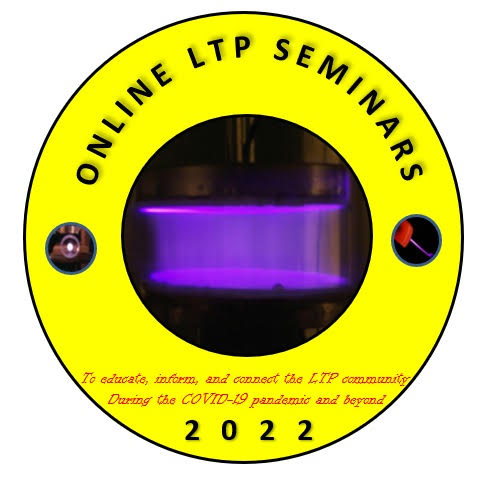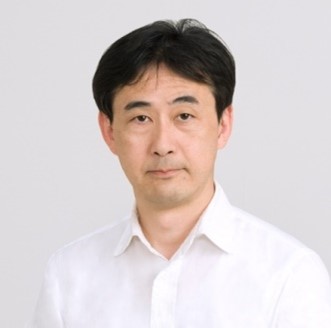
Because of the pandemic caused by COVID-19, most scientific conferences, workshops, and symposia have been cancelled or postponed. The unfortunate consequence of this is that the low temperature plasma (LTP) community, like many other research communities, is now isolated without the opportunity to meet, network, and learn what’s new in our field. To remedy this situation, a bi-weekly online seminar has been organized. This seminar series, founded by Prof. Mounir Laroussi of Old Dominion University, is meant to fill the gap left open by the lack of scientific meetings and conferences. The seminar organizing committee has selected several outstanding speakers to participate by giving a 25-30 minutes lecture followed by 10-15 minutes discussion. The seminar, held on Tuesdays at 10:00 AM EST via Zoom, is free to access from anywhere in the world.
For more information, and to request the Zoom link and password, please contact Dr. Ana Borras (anaisabel.borras@icmse.csic.es) and Dr. Mohan Sankaran (rmohan@illinois.edu).
The OLTP seminar is sponsored by AIP Publishing and their Plasma Portfolio of Journals: Journal of Applied Physics, Physics of Plasmas, AIP Advances, and Matter and Radiation at Extremes.
OLTP Seminar Committee Members
All talks place 4:00pm Paris time/ 10:00am Eastern Time
*Joint Session with the International Online Plasma Seminar IOPS*
The use of electric propulsion (EP) for spacecraft is seeing growing application from both commercial and government providers due in large part to its ability to offer substantial savings in mass and cost compared to traditional chemical rockets. Underlying these developments are basic studies of plasma dynamics for in-space propulsion which represents a rapidly expanding area in the field of low-temperature plasma (LTP). Experimental study of these plasma systems has relied on physical probes as well as laser diagnostics. Recent developments in EP plasma diagnostics have leveraged laser based techniques that can offer highly spatially and temporally resolved measurements. The present talk gives an overview of several recent diagnostic advances that our group has focused on including time-resolved two-photon absorption laser induced fluorescence (TALIF) for neutral propellant dynamics (to address the “breathing mode”), cavity ring-down spectroscopy (CRDS) for eroded/evolved species, and laser Thomson scattering (LTS) for electron density and energy. In each case, I will explain the diagnostic technique and give examples of its application to EP systems. The suite of diagnostics should also be of interest for other areas of experimental LTP research.
About the Speaker: Dr. Yalin joined the Department of Mechanical Engineering at Colorado State University (CSU) in 2002 and is currently a Full Professor. He received his undergraduate degree in Engineering Physics from Queen’s University, his MA and PhD degrees from the Department of Mechanical and Aerospace Engineering at Princeton University, and held a post-doctoral position at Stanford University. Yalin’s research interests are in the areas of laser diagnostics for plasma, combustion and atmospheric sensing. He is particularly interested in electric propulsion and plasma engineering and has developed several novel laser diagnostics targeted at these areas. At CSU, he serves as the Director of the Center for Laser Sensing and Diagnostics which includes approximately 10 researchers. He is also the Director of the CSU NASA Space Grant program which supports educational initiatives for diverse undergraduate students.
Lorin Swint Matthews is a Professor and Chair of the Department of Physics at Baylor University where she is the Associate Director of the Center for Astrophysics, Space Physics, and Engineering Research. She received her Ph.D. in Physics from Baylor University in 1998. She worked for Raytheon Aircraft Integration Systems from 1998-2000 as a multi-disciplined engineer in the Flight Sciences Department, where she worked on NASA's SOFIA (Stratospheric Observatory for Infrared Astronomy) aircraft. In 2000, she joined the faculty at Baylor University. Her areas of research include numerical modeling and experimental investigations of the charging and dynamics of dust in astrophysical and laboratory plasma environments, for which she received a National Science Foundation CAREER Award in 2009. She is a Fellow of the American Physical Society.
, abstract, slidesYang Cao is a Postdoctoral Researcher of Pulsed Power and Plasma Physics (P4) Laboratory at Technion – Israel Insititute of Technolgoy where he works with Prof. Yakov Krasik. His research focuses on the interaction of sub-nanosecond high-power microwave (HPM) pulses with plasma and neutral gas. Over the past few years, Yang has co-authored twelve papers that were published in respected journals such as Phys. Rev. Lett., Phys. Rev. E, and Phys. Plasmas. He is listed as the first author/sole corresponding author in eight of these publications. As a PhD student, he was awarded as the Best Student Paper Awards in 2019 PPPS, 2020 ICOPS, and 2021 PPC. Also, he was the recipant of 2021 Arthur H. Guenther Pulsed Power Student Award from the IEEE NPSS.
, abstract, slidesNon-equilibrium plasmas offer unique processing environments to synthesize materials with exotic properties not achievable with other methodologies [1-3]. More specifically, atmospheric pressure non-equilibrium plasmas are attractive for their non-vacuum operation, which can facilitate and reduce the costs of their integration in manufacturing steps [4]. In this contribution, the use of atmospheric pressure plasmas to explore new materials and tailor their properties will be presented, including opportunities offered through defect creation, surface engineering, doping and ‘cluster-doping’ [5-6]. Of fundamental importance to achieve materials with desired properties is also the understanding of the underlying plasma mechanisms and therefore efforts in this direction will also be discussed. Finally, examples of plasma-based device fabrication will be described [7]. For instance, this contribution will include aspects that relate to plasma synthesis of nanofluids for solar-thermal energy conversion, functionalization of catalytic surfaces as well as fabrication of solar cells [4, 5, 8, 9].
1. AJ Wagner et al. Physical Review E 80 (2009) 065401 2. S Ghosh et al. Journal of Physics D: Applied Physics 48 (2015) 314003 3. P Maguire et al. Nano Letters 17 (2017) 1336 4. D Mariotti et al. Plasma Processes and Polymers 13 (2016) 70 5. Khalid et al. Advanced Energy Materials 12 (2022) 2201131 6. V Švrček et al. Journal of Physics D: Applied Physics 43 (2010) 415402 7. D Sun et al. Composites Science and Technology 186 (2020) 107911 8. HS Moghaieb et al. Nanomaterials 13 (2023) 1232 9. V Švrček et al. Chemical Physics Letters 478 (2009) 224
 Kenji Ishikawa, Nagoya University, Japan
(video)
Kenji Ishikawa, Nagoya University, Japan
(video)
JOINT SEMINAR WITH GEC-IOPS
JOINT SEMINAR WITH GEC-IOPS
JOINT SEMINAR WITH GEC-IOPS
JOINT SEMINAR WITH GEC-IOPS
JOINT SEMINAR WITH IOPS
JOINT SEMINAR WITH IOPS
JOINT SEMINAR WITH IOPS
JOINT SEMINAR WITH IOPS
videoJOINT SEMINAR WITH IOPS